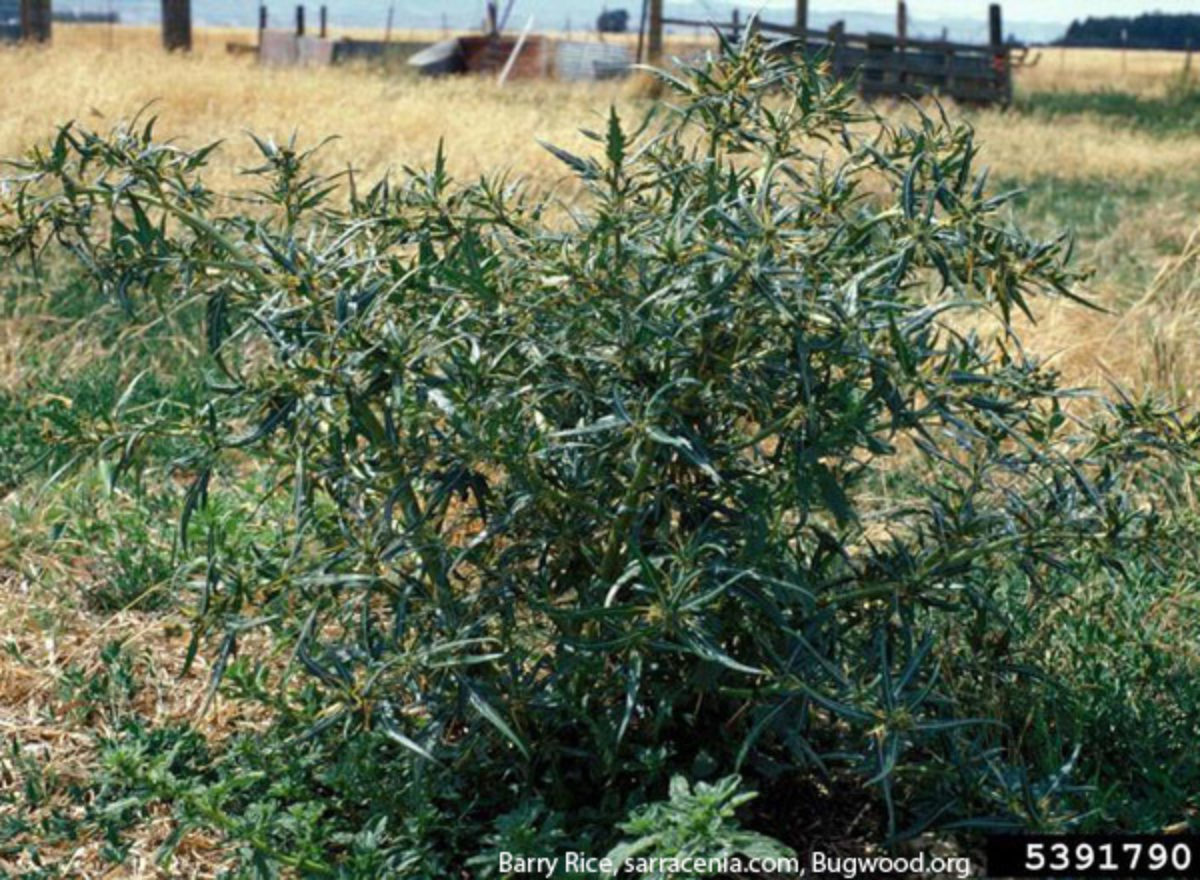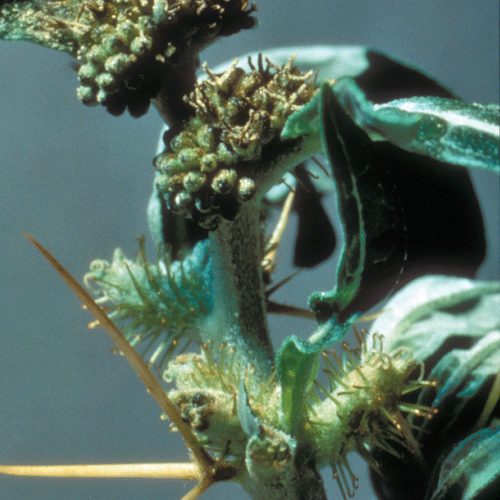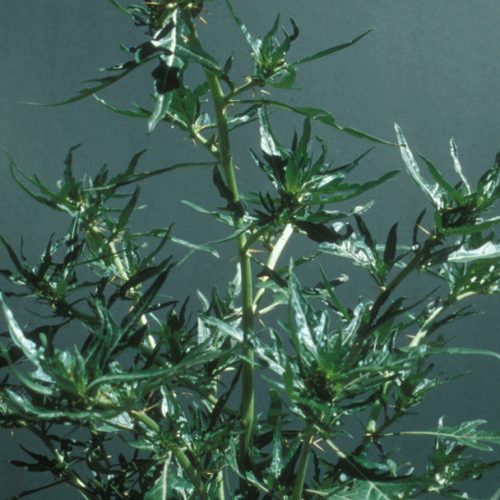Spiny Cocklebur
Xanthium spinosum

Family: Asteraceae
Other Common Names: prickly burweed
Weed class: C
Year Listed: 1988
Native to: South America
Is this Weed Toxic?:
humans, livestock
Why Is It a Noxious Weed?
Its spiny burrs can become tangled in the hide of cattle and horses and in the wool of sheep. It can provide competition for summer crops and is a nuisance to pickers in hand-harvested crops. The seeds and cotyledonary seedlings are poisonous.
How would I identify it?
General Description
Spiny cocklebur is an upright, much branched annual that grows up to 4 feet high. Yellow, three parted spines, about 0.5 to 1 inch long, occur in leaf axils.
Flower Description
The flowers are small, inconspicuous, and creamy green. The male flowers are found at the top of the stems and the female flowers are formed lower on the stems.
Leaf description
The leaves are shiny dark green and hairy on the upper surface and downy beneath. The leaves are lance shaped and up to three inches long, many three-lobed with the center lobe much longer than the others.
Stem description
Stems are hairy and branching.
Fruit Seed Description
The fruit is more or less an egg-shaped burr, up to one-half inch long, armed with numerous hooked spines, some with one or two straight terminal spines. There are two seeds per burr, flattened, three-eighths inch long and brown in color.
Where does it grow?
Spiny cocklebur is adapted to a variety of climates, hence its wide distribution. It is found in a wide variety of soil types growing in cultivated fields, wastelands, farm yards, flood plains and along waterways. Please click here to see a county level distribution map of spiny cocklebur in Washington.
How Does it Reproduce?
Spiny cocklebur reproduces by seed. The seeds are well adapted for dispersal by livestock or people because of the hooked spines on the fruit.
How Do I Control It?
Mechanical Control
On arable land, cultivation is effective against the seedlings. This should be repeated periodically for at least three years. Mowing or slashing is effective if done prior to burr formation.
Herbicide Control
Please refer to the PNW Weed Management Handbook, or contact your county noxious weed coordinator.
For More Information
See our Written Findings for more information about spiny cocklebur (Xanthium spinosum).
Report on spiny cocklebur from the book "Weed Control in Natural Areas in the Western United States"





